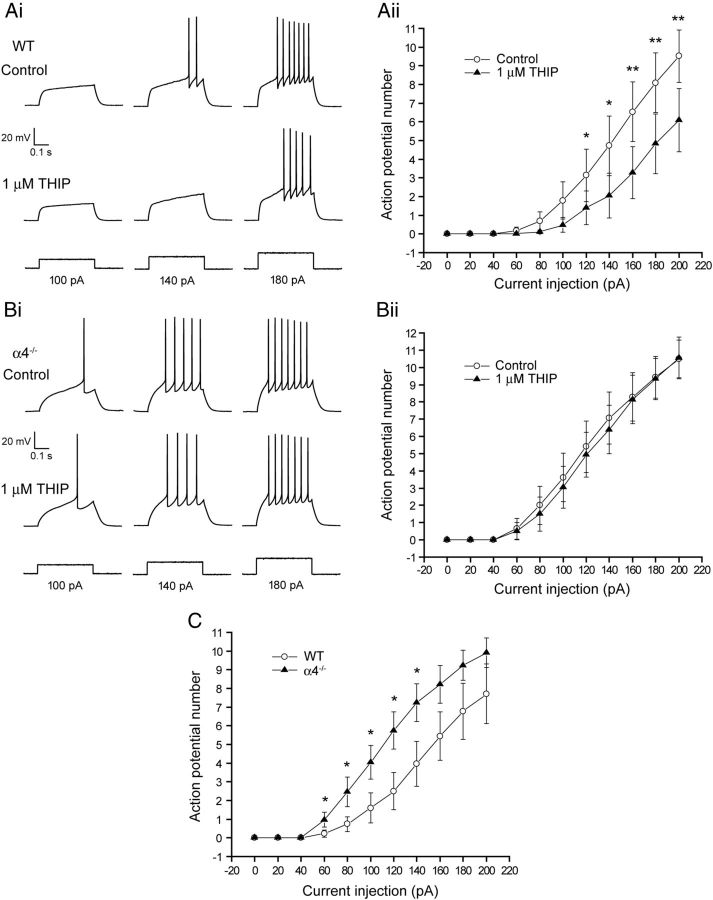Figure 6.
Deletion of the α4 subunit increases the excitability of accumbal MSNs and suppresses the inhibitory effect of THIP. Ai, Bi, Representative whole-cell current-clamp recordings of action potentials induced in response to current injection (100, 140, 180 pA; 400 ms duration) of MSNs from WT and α4−/− mice together with the associated input/output (I/O) curves. Aii, Bii, the number of action potentials discharged plotted as a function of the magnitude of the current injected examined over a greater range of current injections (20–200 pA, 20 pA increments). For all experiments, current injection was used to standardize the RMP of the MSN to −87 mV, a value similar to that determined from the gramicidin perforated-patch experiments (i.e., −90 mV). The intracellular solution for current-clamp experiments contained a physiological [Cl−] designed to mimic the GABA reversal potential (calculated EGABA = −71 mV) we obtained experimentally. Inspection of the representative control recordings in A and B reveals deletion of the α4 subunit, which decreases the tonic current to increase neuronal excitability in response to current injection. C, This feature is reinforced by the leftward shift of the I/O curve for MSNs derived from α4−/− mice (▴) compared with WT (○). Data were obtained from 17 and 22 MSNs, respectively (*p < 0.05; Student's unpaired t test). Ai, For WT MSNs, THIP (1 μm) increased the current required to elicit action potentials. Aii, The data obtained from nine paired cells (before and after THIP) is summarized as an I/O curve. For WT MSNs, the plot reveals THIP (▴) to cause a shift to the right of this relationship, indicating a reduced excitability compared with control (○; *p < 0.05; **p < 0.01 vs control by Student's paired t test). Bi, Bii, In contrast, THIP had no such effects on MSNs derived from α4−/− mice.

